No matter how many times I’ve seen it, the magic of germination still awes me as if it was the first time.
I still don’t understand how bushels of juicy tomatoes will come from a single seed smaller than the diameter of a pencil eraser, or how specks of basil seeds will turn into a forest of woody, fragrant herbs that grow over 3 feet tall.
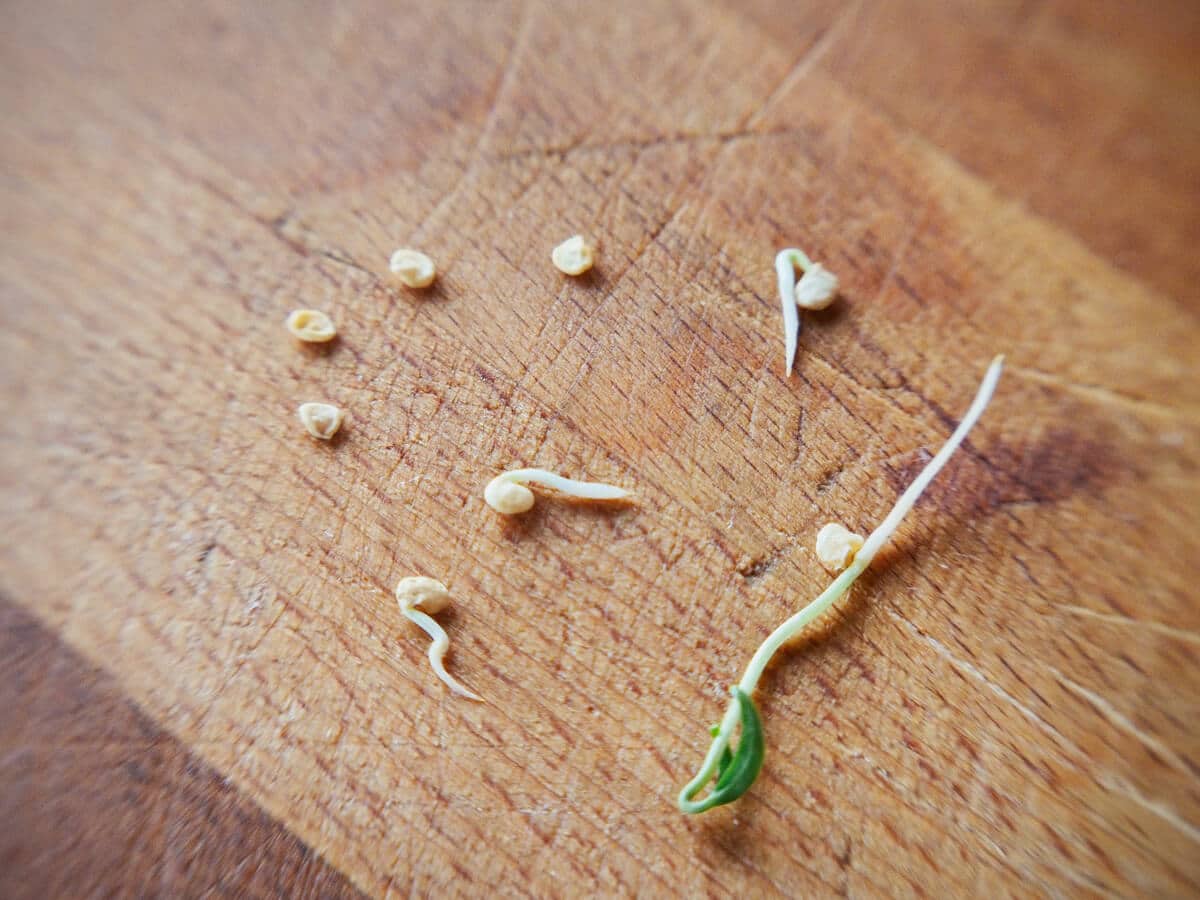
It’s amazing what happens inside a seed before and after it sprouts, and being witness to such a process—something you can only experience by growing from seed—is truly one of the wonders of life.
The anatomy of a seed and seedling is something every gardener should know, and learning the science behind it will help you become a better gardener!
Anatomy of a seed
Sometimes we simply bring home starter plants from the nursery, which have already been trained and nurtured from birth, and we don’t realize what it took to get them to that point.
Then we think how hard it is just to keep those starter plants alive! Try raising them from seed, where it may take a few tries and a few rounds of natural selection before you get the perfect plant.
When you have a seed in front of you, you’re looking at the seed coat, or testa. Seed coats can be soft and thin (like beans) or fleshy and thick (like squash).
Think of them as armor for the future plants inside; the seed coats protect against the elements until conditions present themselves in just the right manner for germination to take place.
Seed coats are adapted to their environments, and they function as a barrier to damage or injury, heat or cold, bacteria or fungi, and even stomach acidity (if ingested by animals).
With all this bomber protection in place, it’s no wonder we sometimes have trouble getting a seed to sprout! (Soaking your seeds first can help with this, or in the case of tomato seeds, you can ferment them to speed up germination.)

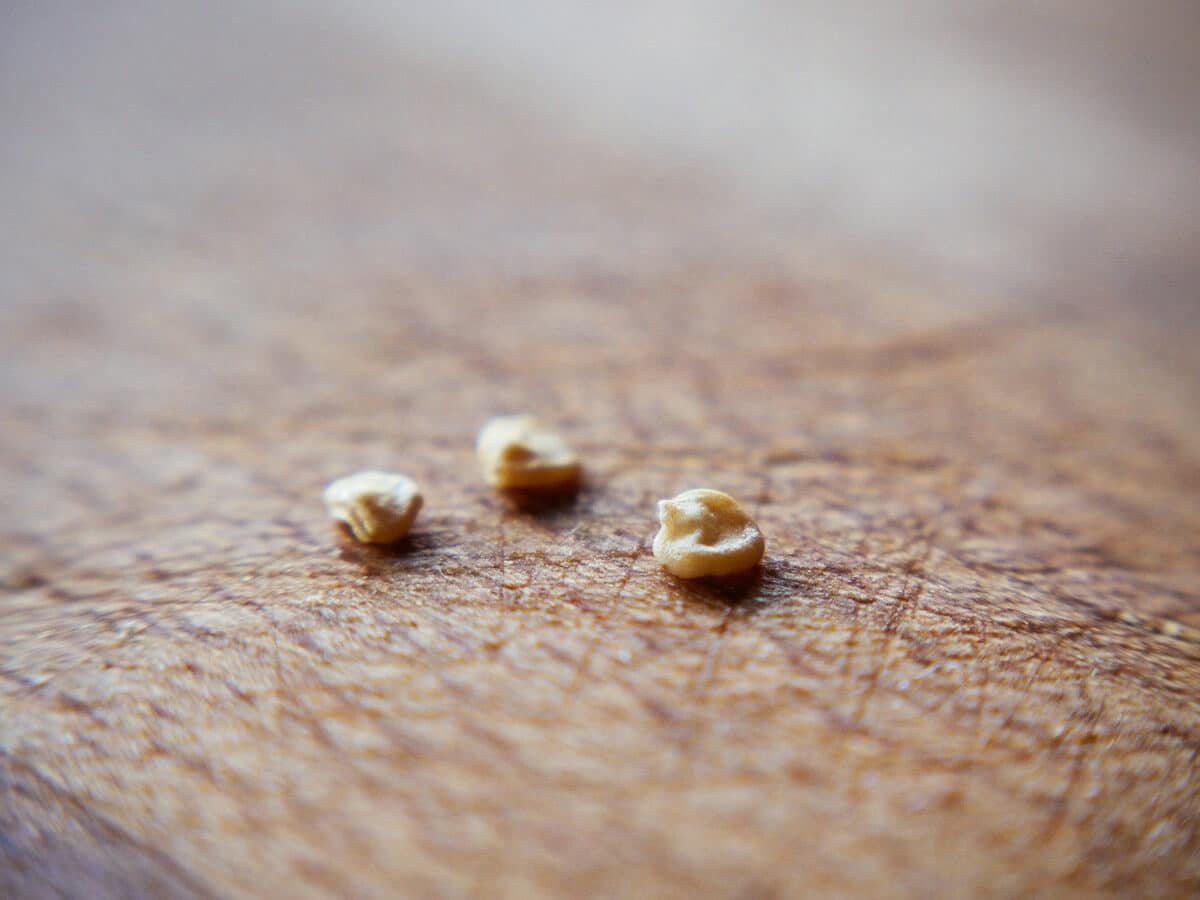
On some seeds, you can see the scar, or hilum, that was left behind when the seed became detached from the mother plant (similar to a human belly button).
Hilum are most visible on bean seeds, where the scars as known as eyes—as in black-eyed peas. Others are less noticeable and look like little nubs or dents on the seed coat.
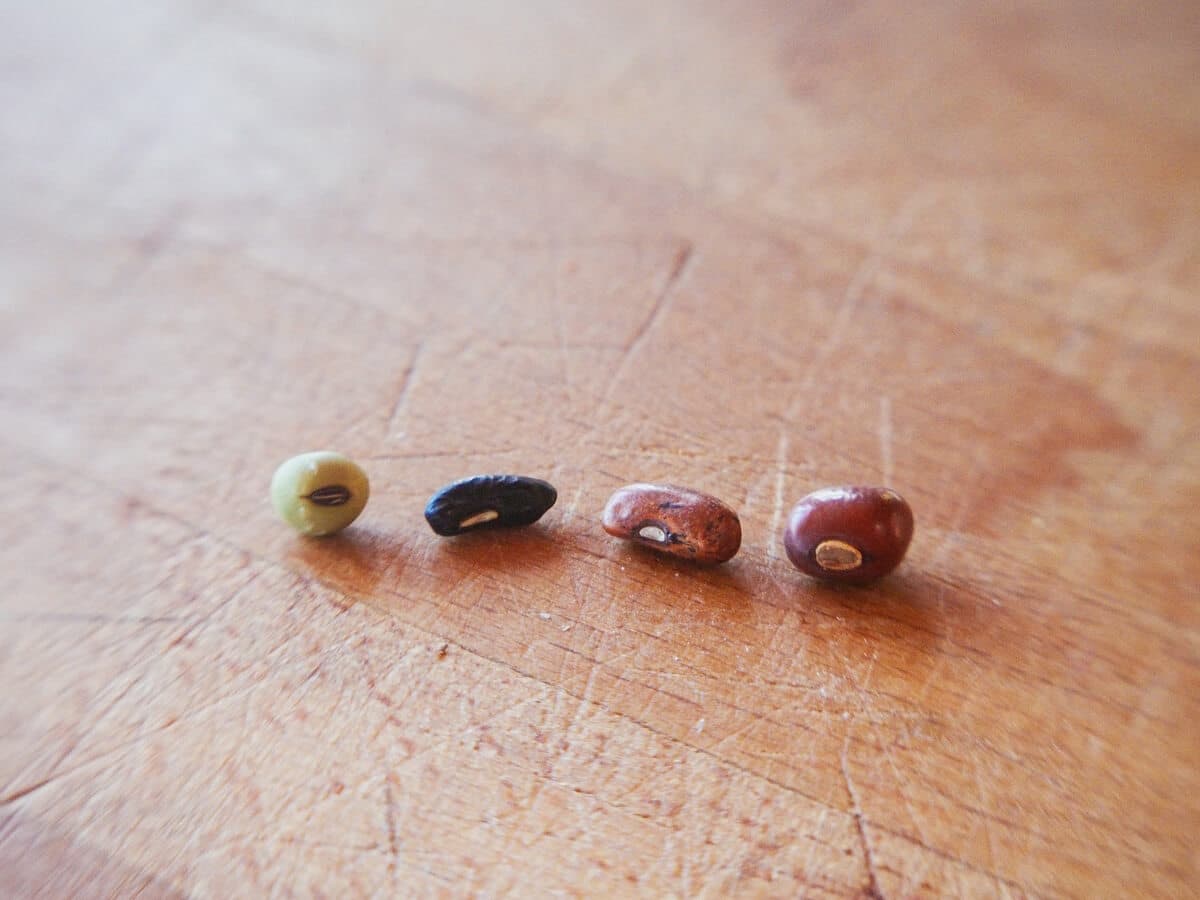

Inside the seed coat is the embryo (baby plant), the endosperm (nutritive tissue), the cotyledons (leaf-like structures), and the beginnings of the root and shoot.
Look closely at this wet seed and you’ll actually see the green cotyledons tucked tightly inside and curled up in fetal position. They are just waiting to be released! (Or at least, that’s what I hope every time I start some seeds.)

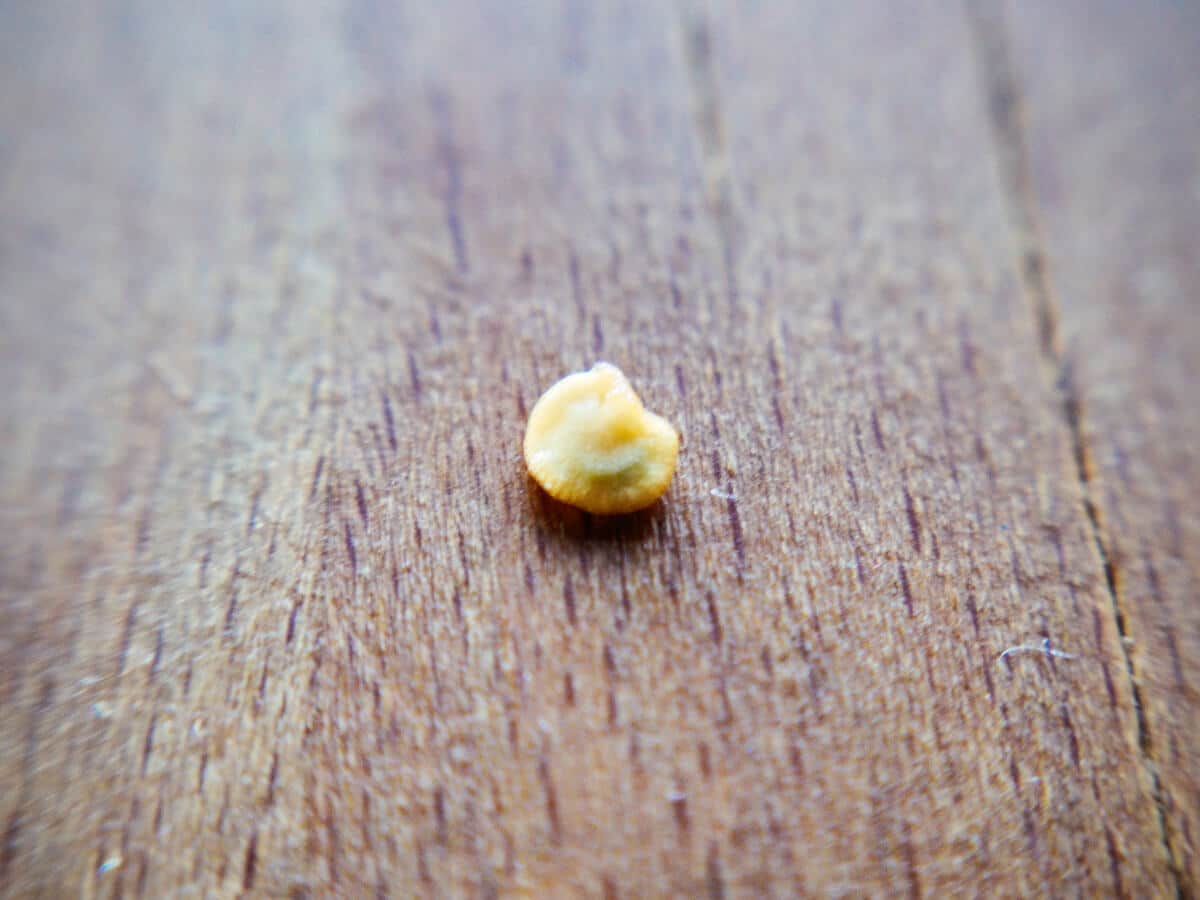
What happens when a seed germinates
Germination occurs when all the proper variables are in place for that particular variety (oxygen, temperature, light or darkness) and the seed coat absorbs water, causing it to swell and rupture.
The first sign of life comes from the radicle, a little white tail that eventually becomes the primary root of the plant.
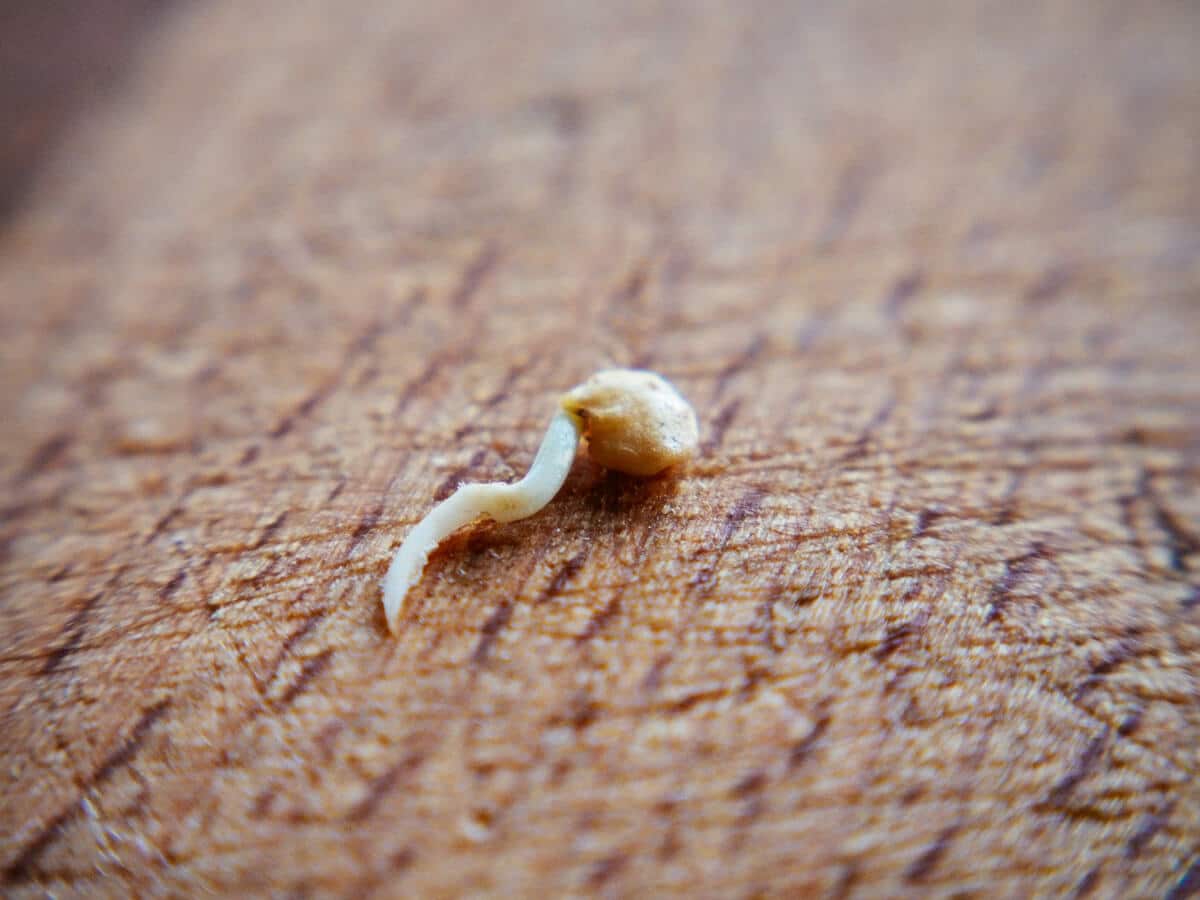
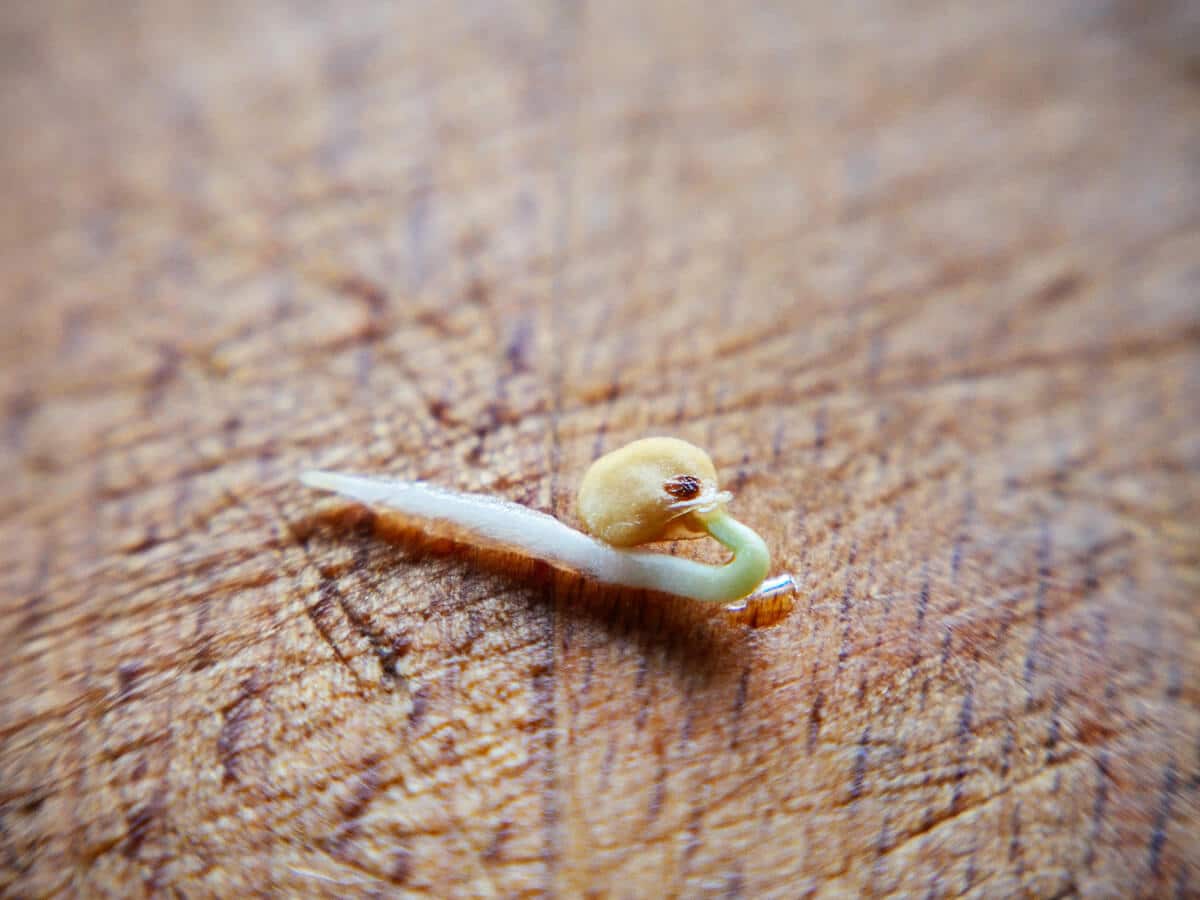
The role of the radicle is to anchor the plant in the ground and start absorbing water. Once it absorbs water, a rudimentary stem called a hypocotyl emerges and the cotyledons start to unfurl, often taking the seed coat with them as they rise above the soil.
(I like to call them seed hats, as sometimes they’re never shed from the cotyledons and end up looking like little berets.)
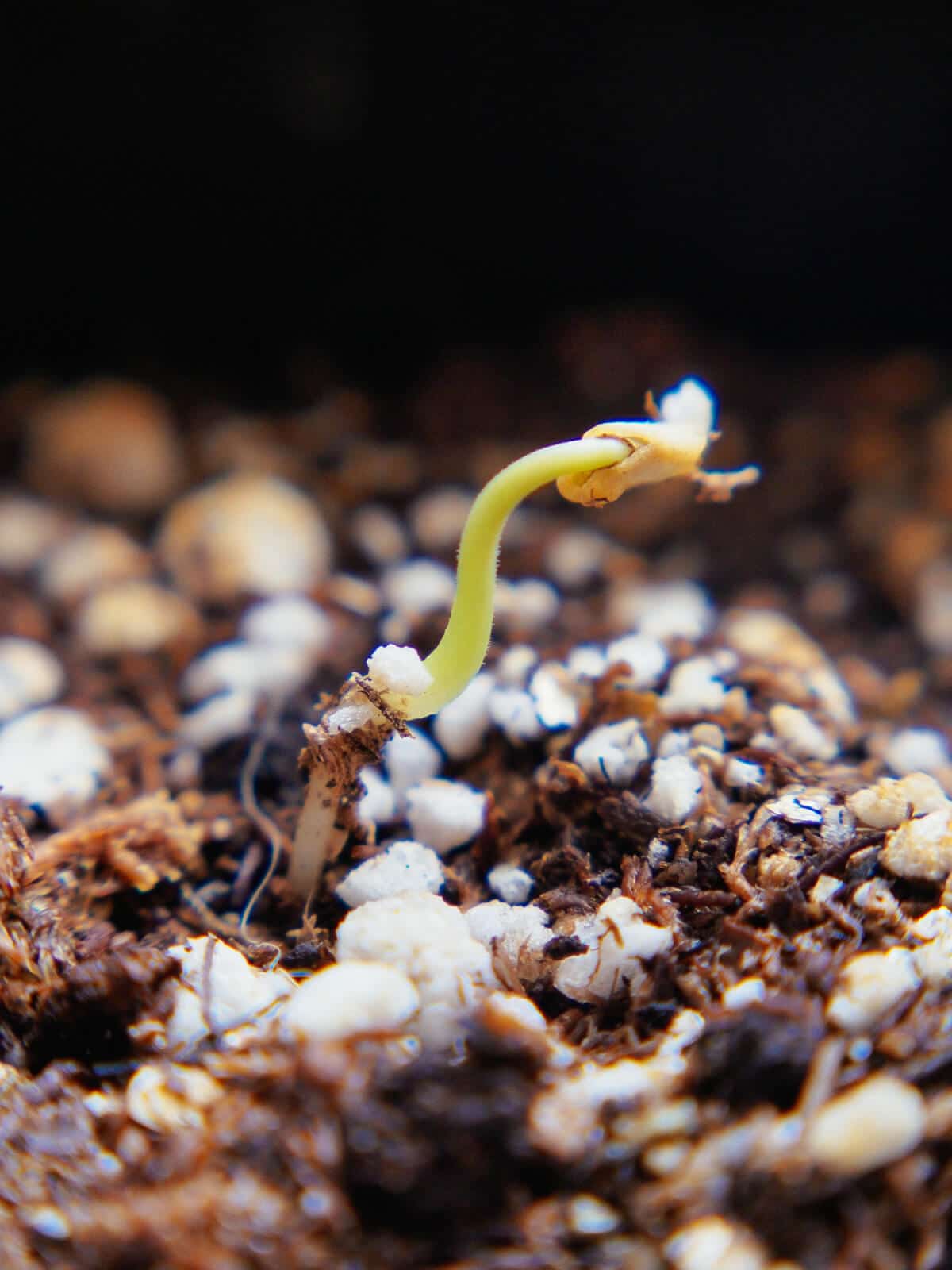
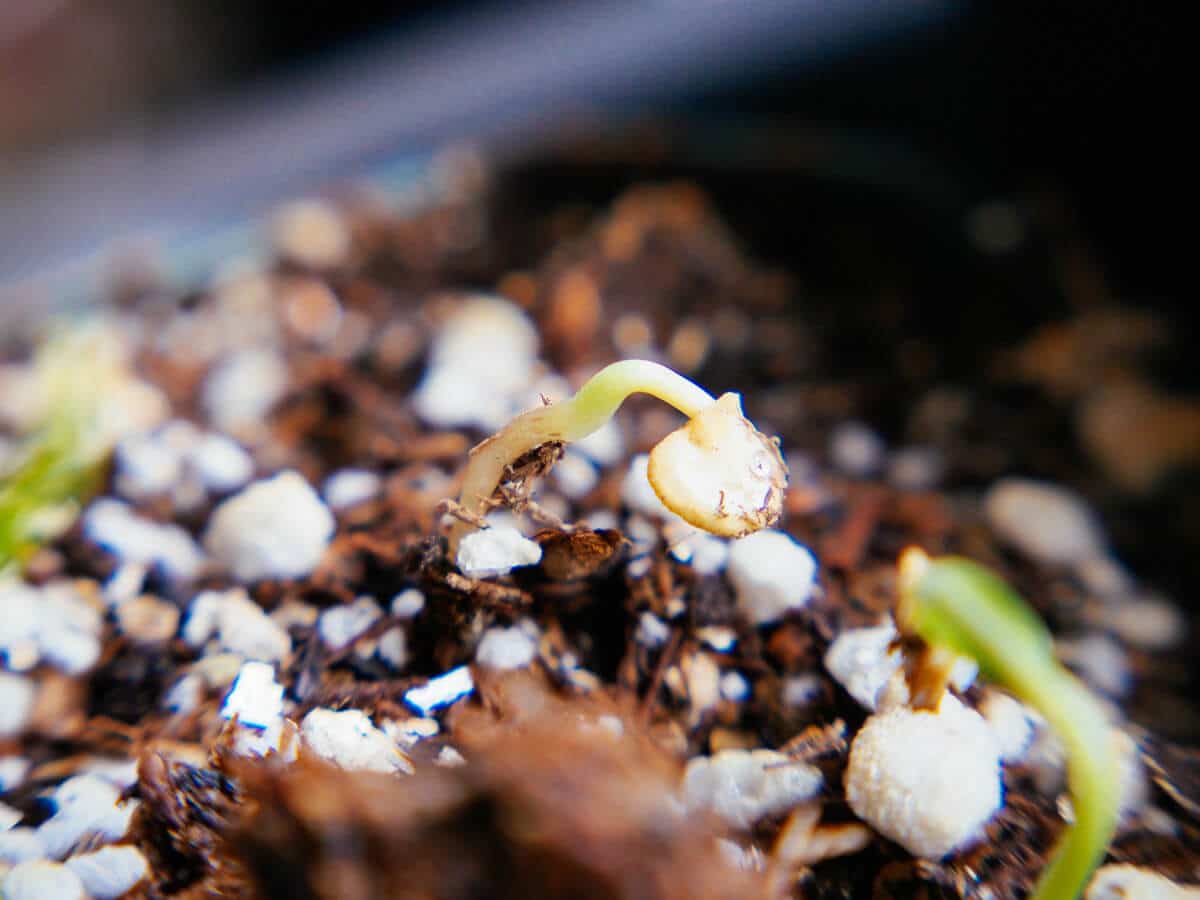
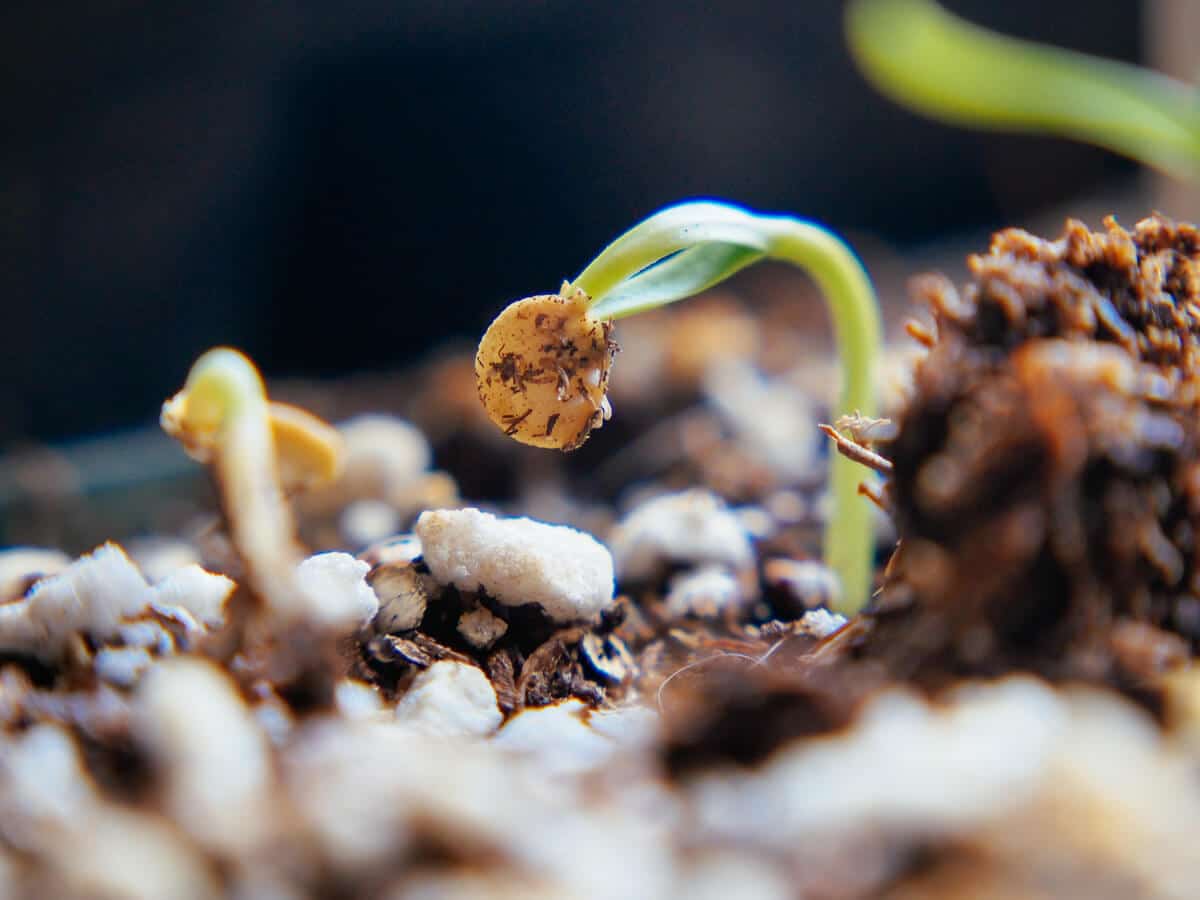
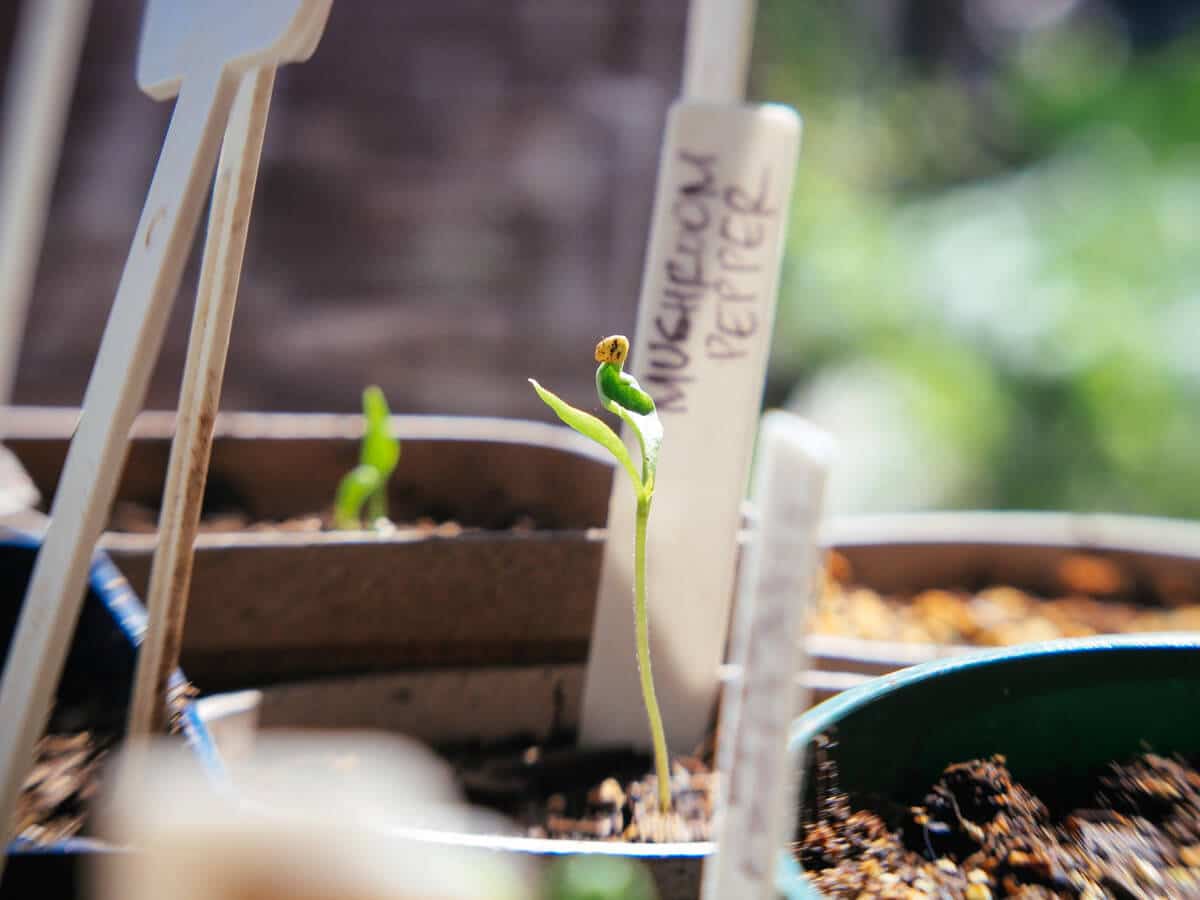

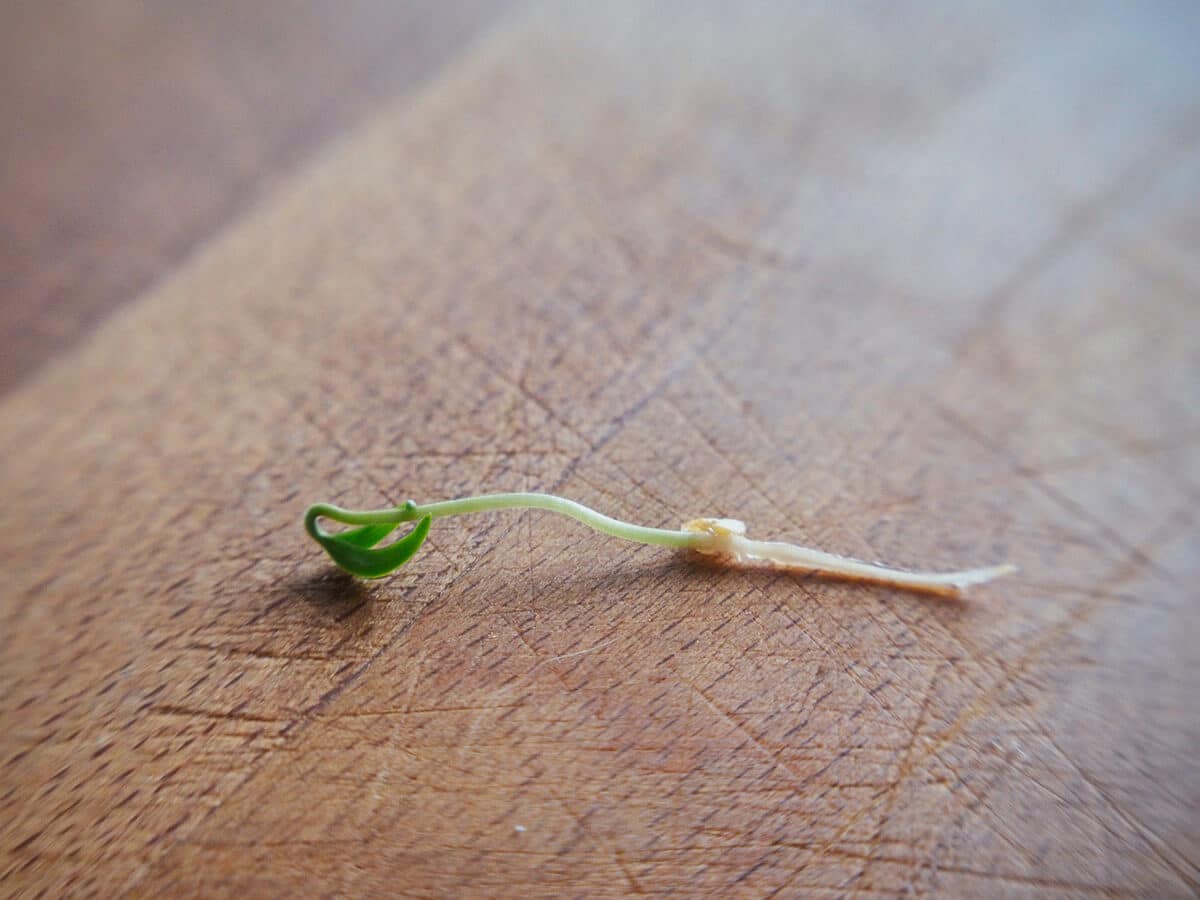
What are cotyledons?
Cotyledons look like leaves but are actually not leaves at all. Sometimes they’re called seed leaves, because they’re part of the seed or embryo of the plant. Their function is to absorb all the endosperm and become the temporary stores of the plant’s initial supply of nutrients.
There can be just one cotyledon (monocotyledon, as is the case with onions and corn) or there can be two (dicotyledons, which are the majority of your vegetables).
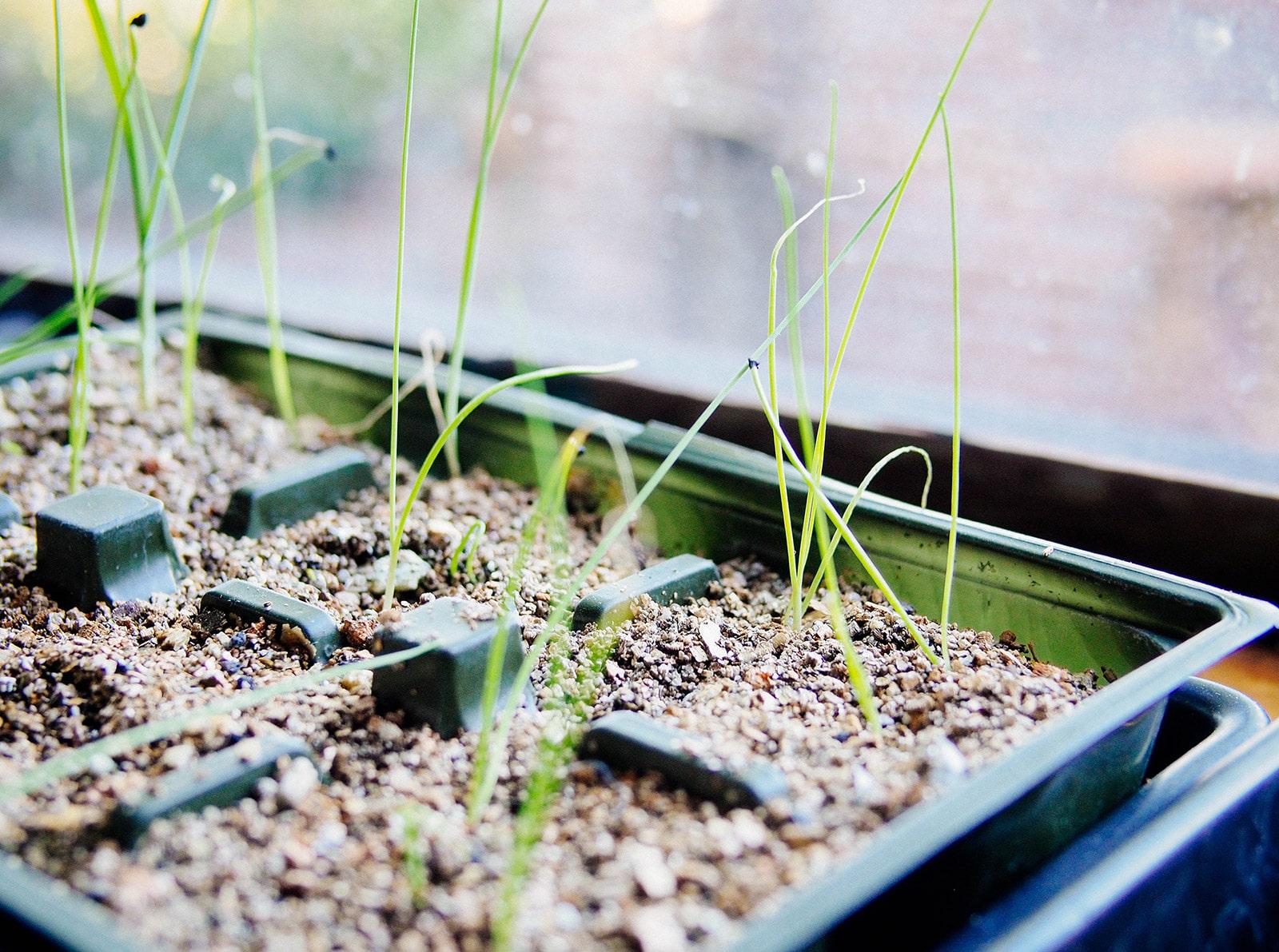
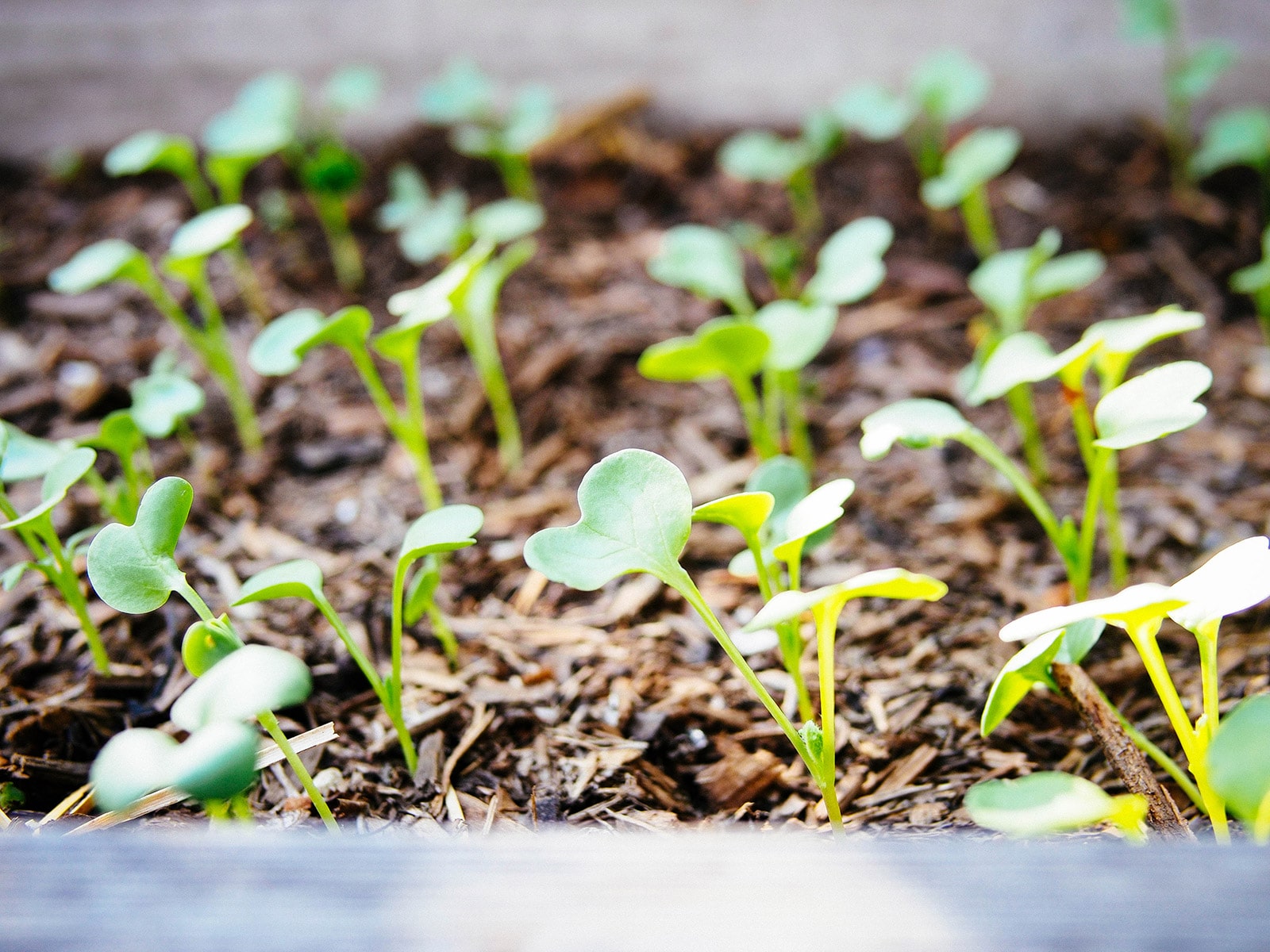
Because cotyledons are not the “true leaves” on a plant, most sprouts from the same family look alike at birth, even if they don’t resemble one another as they mature (like these tomatoes and peppers).

(This is why it’s important to label your seed trays, otherwise you’ll be waiting weeks for the seedlings to develop further before you can identify them.)
The cotyledons feed the plant until all the nutrients are used up. Once they’re spent, they naturally wither and fall off the stem as new leaves form.
These second and subsequent sets of leaves, known as true leaves, are highly distinctive.
You can see how these two varieties of tomatoes have the same cotyledons, but once their true leaves emerge, one seedling has the serrated edges typical of a regular tomato leaf while the other has the smoother lines of a potato leaf.
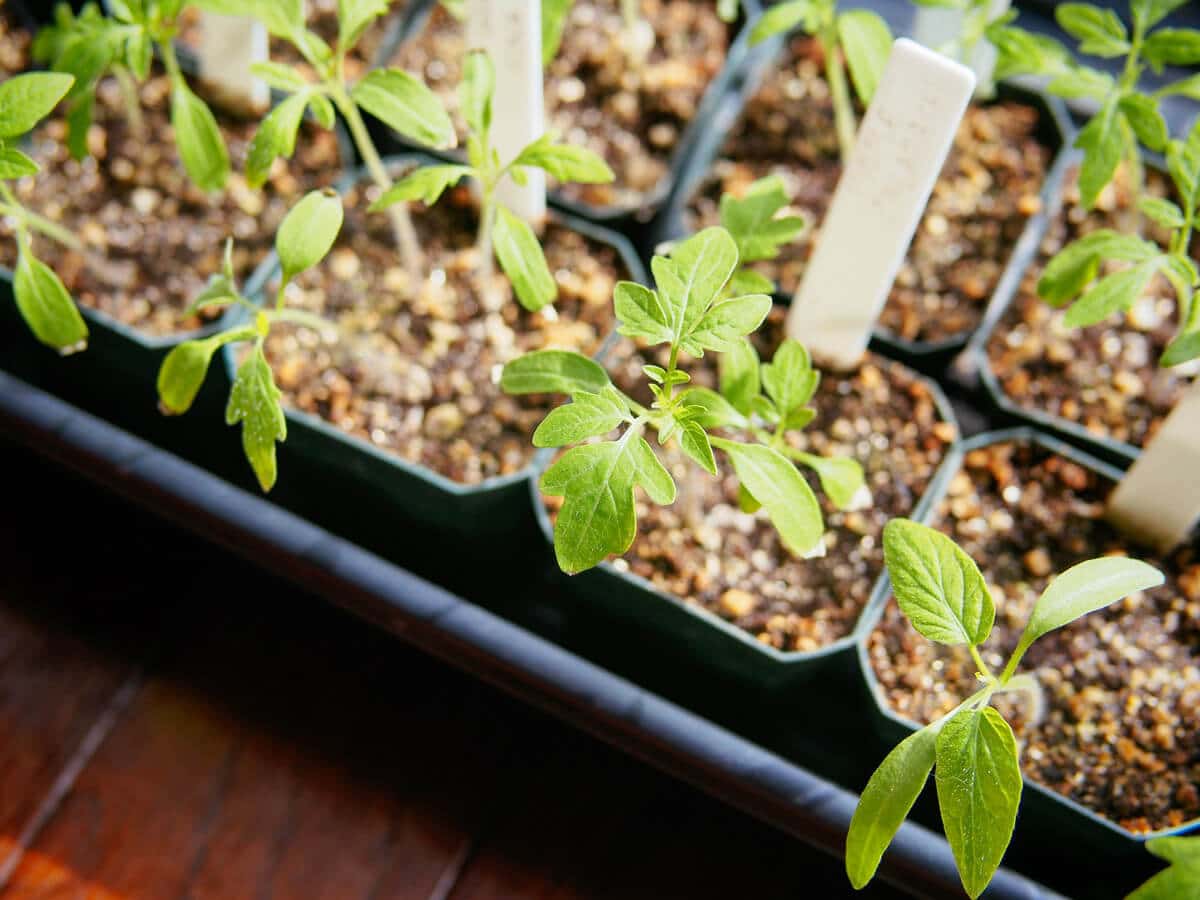
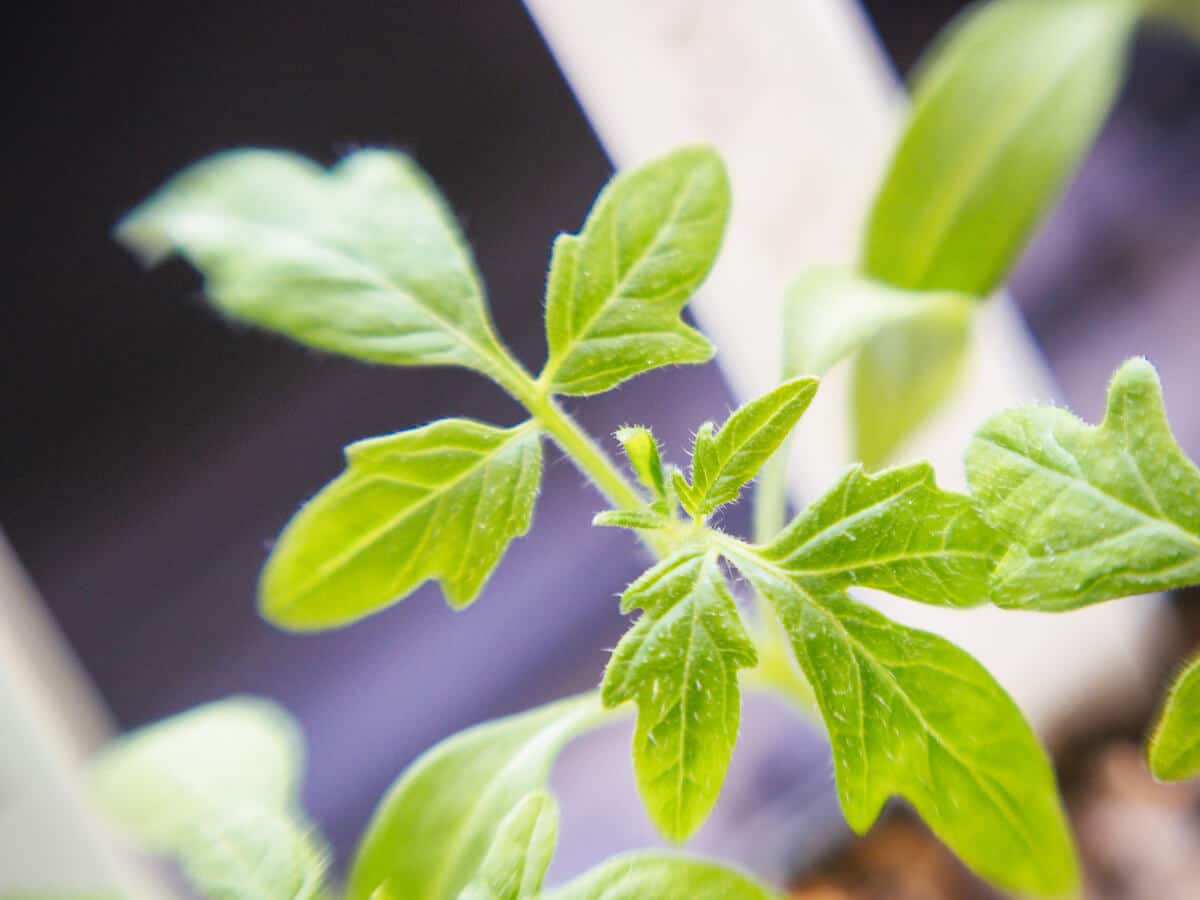

What’s the difference between cotyledons and true leaves?
In general, it takes one to three weeks for true leaves to appear once the cotyledons emerge. (The timeframe is dependent on the type of plant, as well as environmental factors like sunlight, moisture, and temperature.)
So how can you tell the difference?
Cotyledons are always the first leaf-like structures to form when a seed germinates. Most cotyledons are nondescript and tend to look similar within a plant family.
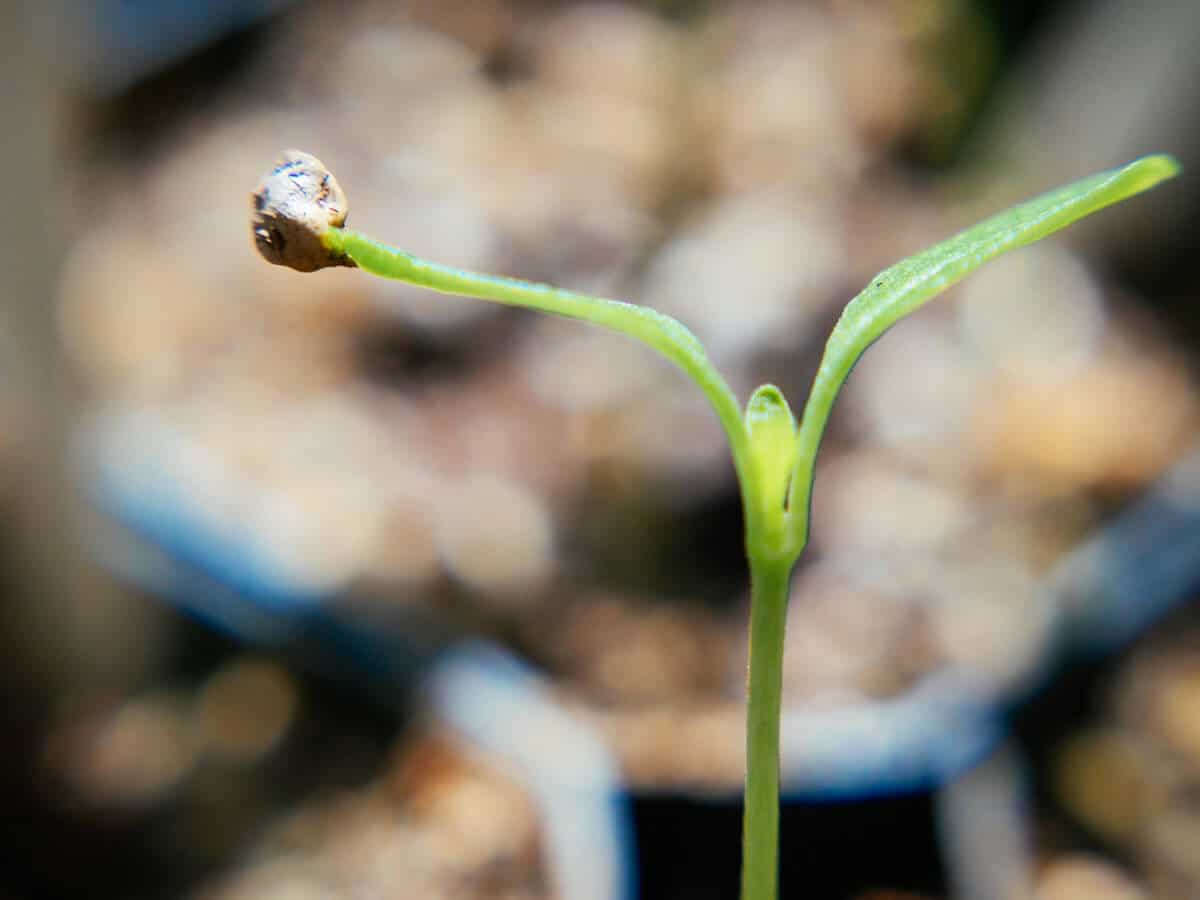
For example, tomato, pepper, and eggplant seedlings (members of the nightshade family) all start out with a pair of long, narrow leaves with slightly pointed tips. On the other hand, radishes, broccoli, and kale (members of the brassica family) begin life with two stubby, heart-shaped cotyledons.
Once the true leaves develop, they start to resemble actual leaves on the mature plant—just tinier versions of them. True leaves grow above the cotyledons and take over the job of supporting the plant for the rest of its lifecycle.
After the first few sets of leaves sprout and the roots dig deeper into the soil, the seedling draws energy from photosynthesis above ground and nutrients found below ground. This is when it enters its vegetative state, and your once-little seedling is on its way to sexual maturity (bud, flower, fruit, and seed).
They grow up so fast, don’t they?
To learn more or get started, here’s a simple guide to starting seeds indoors and a quick tutorial on starting seeds in paper towels (otherwise known as the “baggie method”).
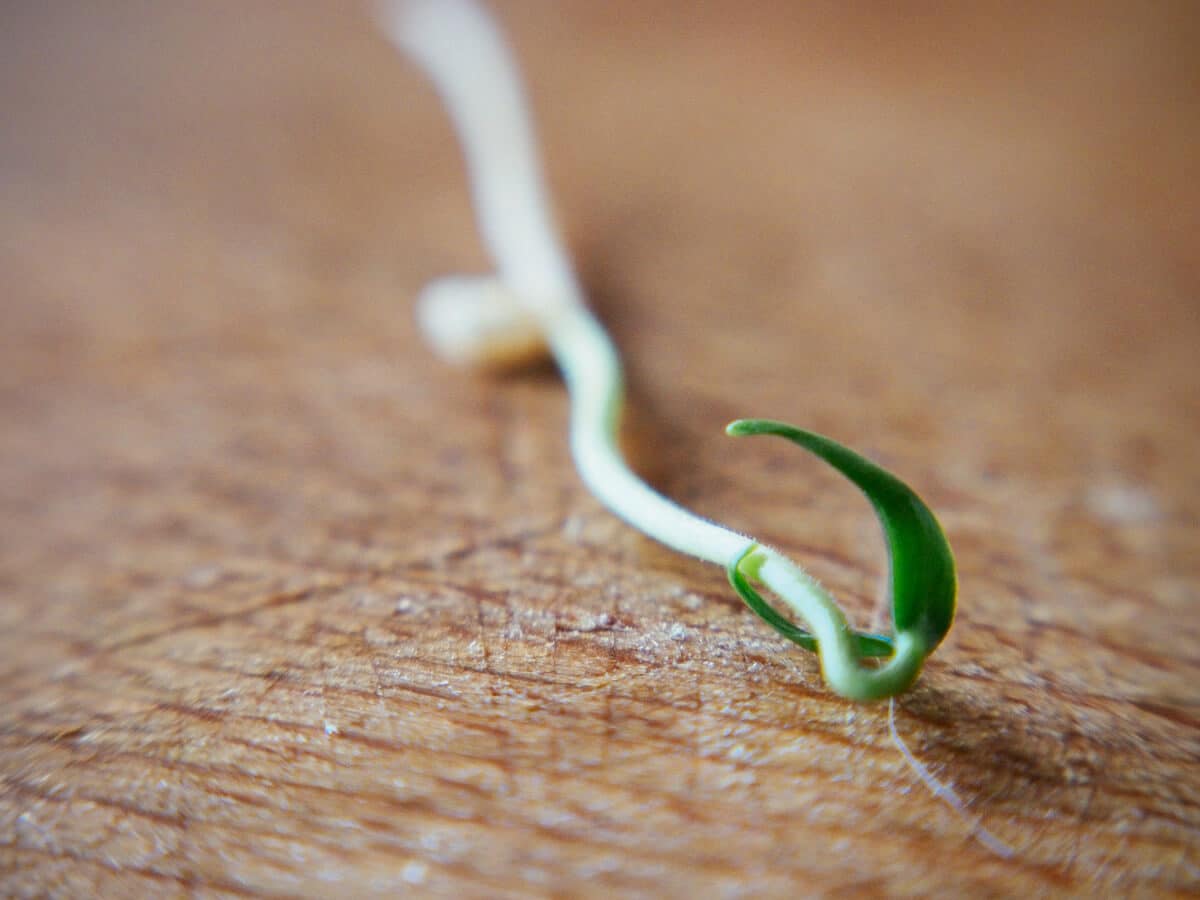
Common questions about seeds and seedlings
How can you tell if a seed is good or bad?
You can determine how long a seed is expected to last in ideal storage conditions by using this seed viability chart.
What are ideal storage conditions? I explain exactly how to store your seeds for the best chances of seed sowing success.
You can also do a simple germination test to find out how viable your seeds are. An easy germination test to try is the paper towel/coffee filter method (also known as the baggie method), which can give you an idea of well a batch of seeds will germinate. Anything less than 50 percent germination is probably not worth sowing in the garden, unless you have enough seeds to sow heavily.
Help! Why did my seedling stall after the cotyledon stage?
Sometimes stalled growth isn’t what it seems. Depending on the type of plant and other external factors (such as available light, moisture, and temperature), it may take up to four weeks or more for a seedling to develop true leaves.
If your seed starting or growing conditions aren’t ideal, try to give your seedling more light or more warmth, or stay consistent with watering. If after a month there’s still no sign of growth (your seedling isn’t getting any taller, or the cotyledons are starting to fall off but the true leaves haven’t emerged), seedling vigor might be compromised—this is sometimes the result of old seed.
Why does my seedling have three cotyledons?
Occasionally, you might find three cotyledons (instead of two) on your seedling. Three cotyledons (a condition known as tricotyledony) are a genetic blip in the seed caused by a recessive gene.
This is usually seen in self-pollinating plants like tomatoes and peppers (as well as cannabis), but more often than not, it’s nothing to worry about. Chances are, the plant will go on to develop normally.
Sometimes you’ll even end up with three true leaves that develop after that, and subsequent leaves may continue to develop in sets of three. It simply means you’ll get a more branched plant that may not grow as tall, or may grow a bit more slowly.
Why are my cotyledons turning yellow and dying?
Cotyledons are designed to feed the seedling in its early stage of life and once the true leaves form, the plant is able to produce its own chlorophyll so the cotyledons aren’t needed any longer. They’ll usually turn yellow or brown, dry up, and eventually fall off (a process that can take several weeks, depending on the plant).
As long as the true leaves are still green and healthy-looking, your seedling is developing normally.
This post updated from an article that originally appeared on March 19, 2014.
View the Web Story on how a seed germinates.


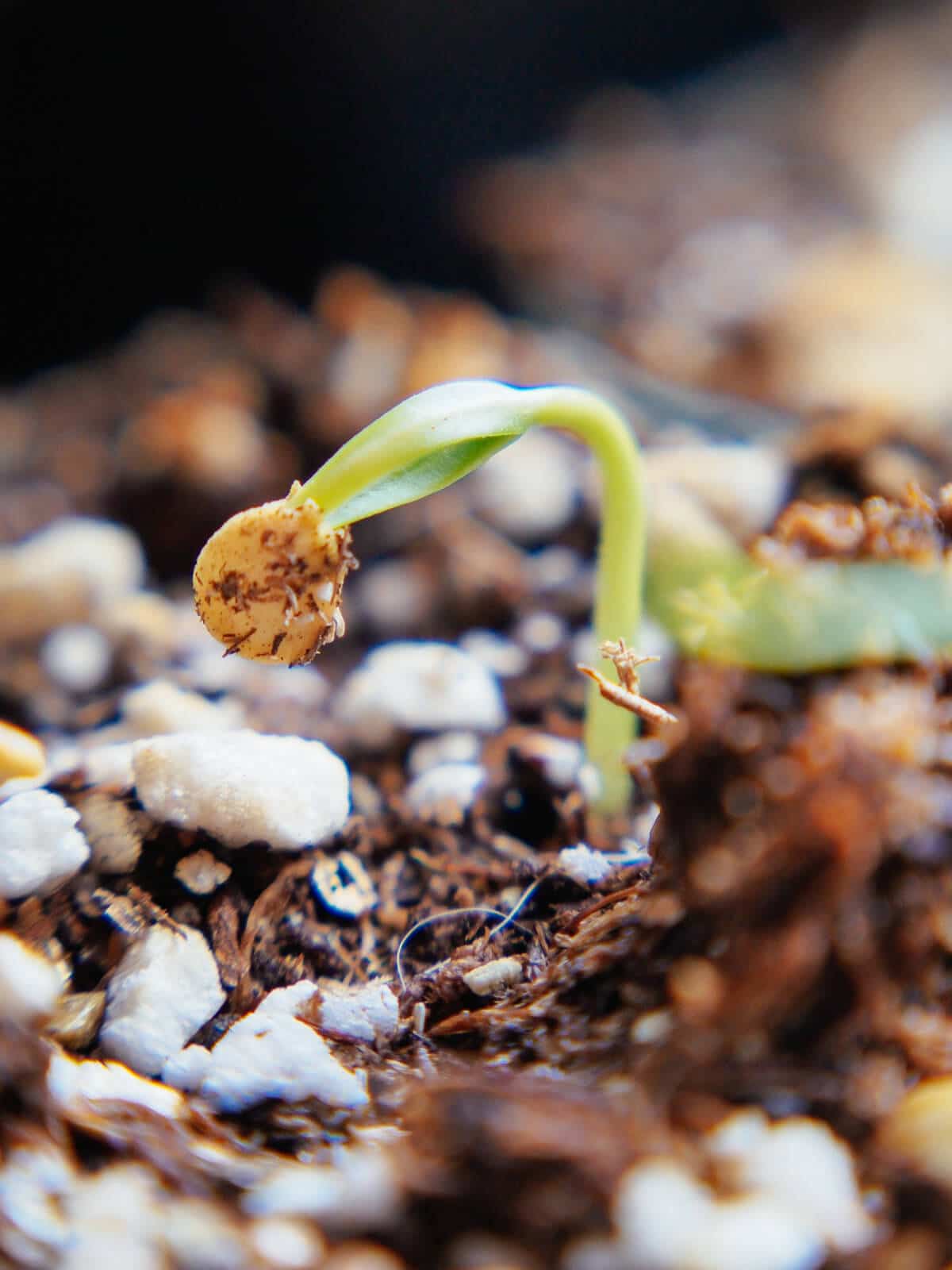













Wow, I had no idea the process of seed germination was so fascinating! I’m definitely going to try growing more seeds in the near future. Thanks for sharing this informative post!
Interesting read! I never knew the process of seed germination was so complex and fascinating. Thanks for sharing this informative post on gardening, Betty!
This is a great blog post! I love learning about gardening and this post is very informative.
When growing plants from seeds, if you separate the larger plants then will their seeds also make larger plants?
When growing plants from seeds, if you separate the larger plants then will their seeds also make larger plants?
So cool! This gets me excited every time!
So fun to see, right? I’m a geek like that. 😀
Wonderful Ms. Ly. Can I assume on all seeds, that it is the Radicle that first emerges? On oranges, grapefruit, and apples sometimes I see 2 little “tails” emerge. I cannot tell which DIRECTION to plant them. Please help! Thank you.
Yes, the radicle is the first root to emerge and becomes the primary root of the plant, so sprouted seeds should be planted with the radicle pointing down (into the soil).
Um hello. I think just plant the whole thing sideways and then the seed will figure it out
I love the enthusiasm! Seeing stuff come to life makes me happy.
I love how something so tiny and seemingly inconsequential has so much going on that we don’t see!
They certainly do…viva la seed and happy germination.
Thank you! This was so informative. I’m growing veg for the first time and panicked when there was a little black thing on to top of my spring onion seedling… turns out it was just its hat 🙂
Very good anatomy lesson! Just noticed these on my basil seedlings today, incredibly interesting.
Fascinating tutorial and beautiful pictures. Spring starts…Now! Whee!!!
Hooray for spring!